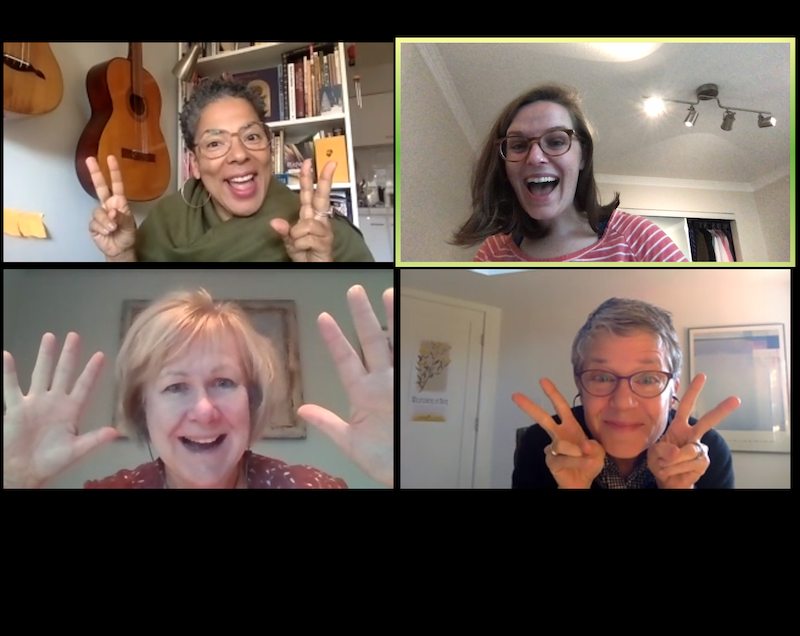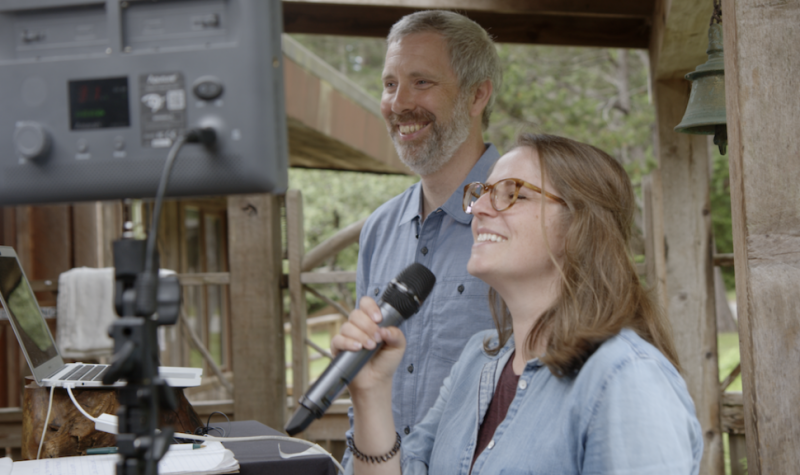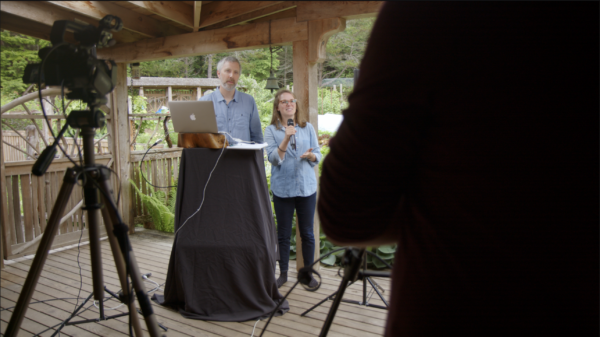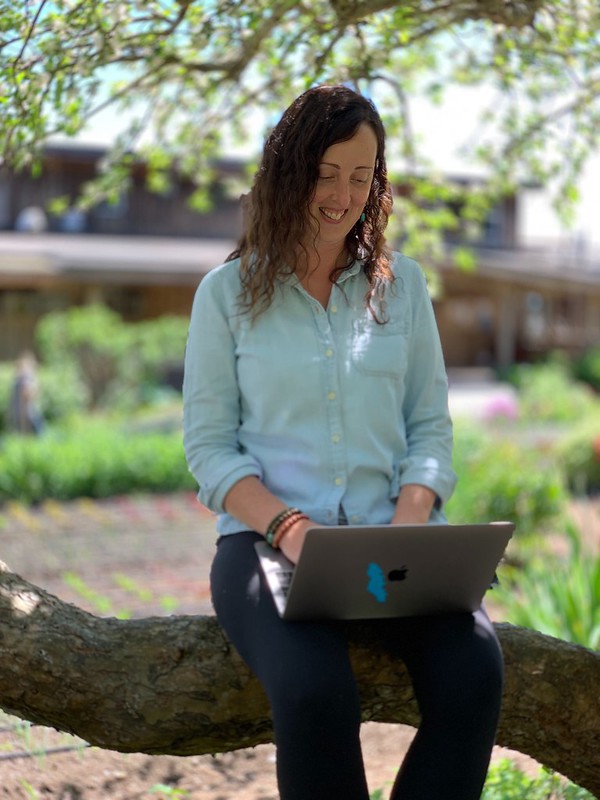By Roy L Hales
In a normal year, Cortes Island’s best known learning centre needs to take in $3-million in revenues to keep operating. 2020 has been anything but normal. As a result of COVID-19, most of this year’s programs were cancelled and Hollyhock could not rehire most of its usual staff. This has also been a year of innovations: with courses being offered online for the first time, and a day-long virtual Hollyhock-a-thon called ‘Shine the Light.’ The Cortes Island centre’s response to this year’s challenges almost amounts to reinventing Hollyhock for a virtual world.
Hollyhock’s future
“Hollyhock will survive, there is no doubt about that. Has it been a disaster? Well, in some ways – yes. We have gone from +$3 million in revenue to $300,000 in earned revenue through our programming.That’s pretty catastrophic,” said Penelope Naldrett, in charge of fund raising.
“I think the Hollyhock of the future will be different and what the world needs is different," she added. "There is no doubt in my mind that people will always gather at Hollyhock. Next year, we are already planning for less people. Until this year, we were always trying to fill the campus – 80 to 100 people [per program]. Next year, it is less. In 2021: We know we won’t be gathering in large groups, but we hope to be gathering in smaller groups.”
The year that wasn’t
For most of the first quarter, it looked like this would be Hollyhock’s best year ever. Registrations were trending 20 per cent above 2019, which was itself a record year.
“We continued to stay grounded in our roots as an organization, with wisdom traditions, spiritual traditions, mindfulness and leadership. We also started growing out a lot of our social innovation programming around social justice, liberation and equity,” said Program Director Ling Lo.
“I will confess to a personal passion of mine, around racial justice, and really making this space a safer place for non white folks to come and enjoy … It was going to be the year that we welcomed the highest number of BIPOC (black, indigenous, people of colour) presenters ever.”
“ …There was a lot of grief in March, when we started realizing we had a lot of letting go to do.”
The limited opening, carried out by Campus Director Andrea Fisher and her team, was meant to figure out the health and safety protocols so that Hollyhock would be prepared for the day it can take in more visitors.
The balance between crisis and creativity
Program Director Ling Lo, who lives within walking distance of the centre, described the balance between being in a crisis mode and being ‘super creative.”
“When I zoom out the lens and think about things on a broader scale – the team we have been able to keep, the culture we have here – It is still a joyful place to be. It is still a joyful garden to walk through and you still hear laughter on the beach. People who are coming for staycations with their families, staying in our campsites, are writing these beautiful messages about being on this land, getting out into the community, swimming in Hague Lake and shopping in the co-op,” she said.
“So there is this balance of having to make this work and provide employment … but there is also so much joy and ease-fulness in this new reality.”

Social Venture Institute Virtual Producer Team – clockwise from top left: Vanessa Richards, Laurel Dault, Martha Belcher, Pam Chaloult – courtesy Hollyhock
.
Going online
Hollyhock has considered offering online courses for years, but it took the COVID-19 crises to make it happen.
“We started out offering it for free … We thought there is so much change and uncertainty, what can we do to help people through this really tumultuous time? … So we started virtual programming a week after everything went into lock down … Lo and behold, we were pleasantly surprised at the support that came in. As people registered to book in and get the ZOOM link, they started donating … So then we realized, people are getting something out of this. Then we just started putting out more and more free content,” said Ling Lo.
This led to the decision to host paid virtual programming. A three day Social venture institute conference was held in April. Some of Hollyhock’s presenters went virtual.

Courtesy BIll Weaver, Across Borders Media
The Hollyhock-a-thon
On June 20, 2020, Hollyhock hosted its first Hollyhock-a-thon.
“Our donors showed up from around the world. It was a ten hour event. Over 650 people attended throughout the day. Over 300 donations were made and we raised over $200,000,” said Naldrett, who connected to the event from her home on Bowen Island.
“Most of the donations coming in were $50, $100. Really wonderful, but they were trickling in. Normally, your larger gifts come from someone you know well. Then someone I had not met, but was involved with Hollyhock a number of years ago, came froward with $5,000. That was a big boost and set a different pace. Then later there was a match offered and the same donor stepped up with $10,000.”
People stayed connected throughout the event.
“They saw all the hiccups, because there were hiccups. Streaming live from Cortes isn’t always easy. They got to see some of our newer presenters, and hear their wise words. They got to hear some of our favourites, like Anne Mortifee … I think that whole day was moving because people weren’t just sharing their donations, they were sharing their love for Hollyhock.”

Reinventing Hollyhock
The surplus Hollyhock acquired in 2019 is gone.
Between donations and their online programs, the centre has raised close to $500,000 so far this year. This is not enough to prevent them from operating from a deficit.
Naldrett says that, even operating with a smaller crew, they need another half million dollars by April 2021.
“The strategic planning is how to raise the next $500,000. We have seen an increase in individual donors, but typically almost 40% of funds raised are from corporate sponsors who are predominantly supporting larger conferences. We have had to cancel two of our conferences and have moved Social Venture Institute to an online offering, and we know that they will be modified again in 2021,” she said.
Lo added, “Strategically, we are doing everything we can to insulate ourselves from having another 2020 experience in March and realizing at that point that the driver of our revenue, being the programming, was going to evaporate. We don’t want to be in that position again. We don’t know if there will be a second wave or when it will be safe to welcome people to Cortes again. We’re very conscious of not wanting to do that, even if provincial regulations say it is okay. This is a very special remote community with limited resources.”
They are planning an ‘in person’ season for April to October 2021, but also intend to have a robust virtual season.
Ling explained, “We realized that we host virtual space really well and we can do a lot of the transformational work on a digital platform.”




